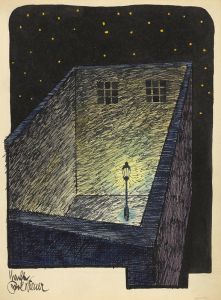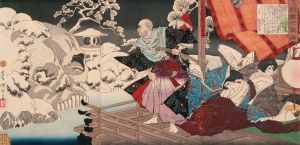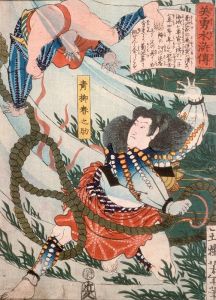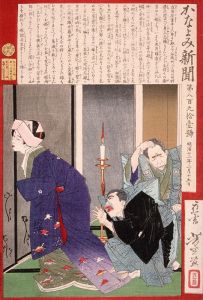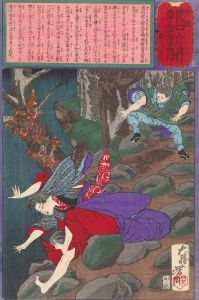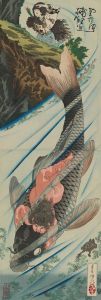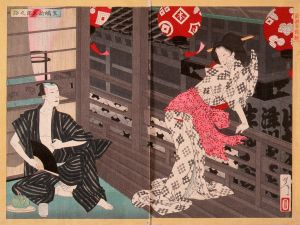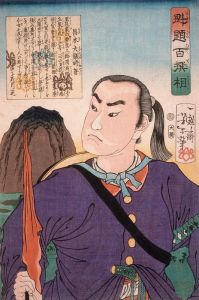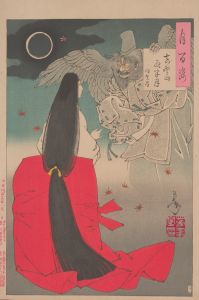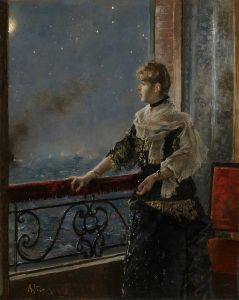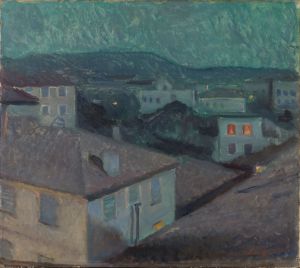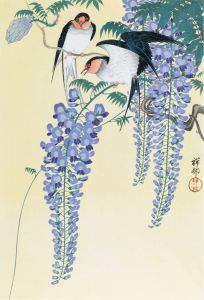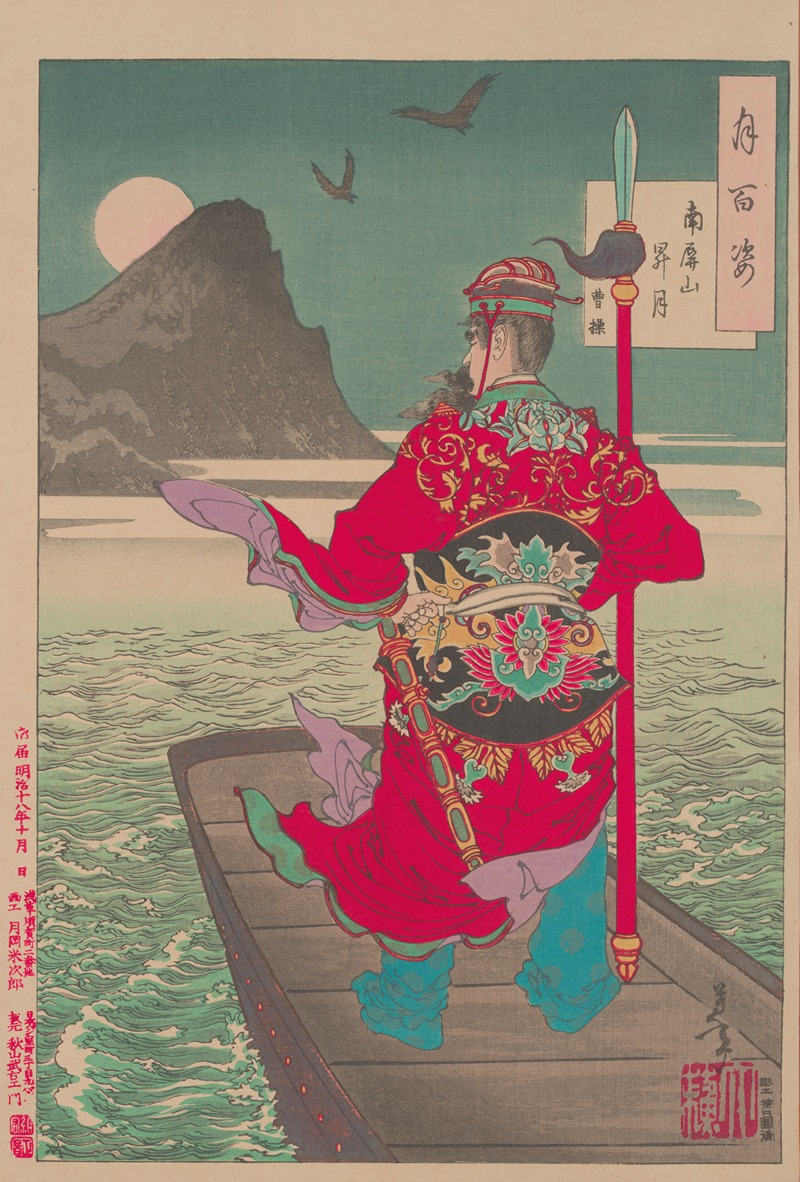
Rising moon over Mount Nanping
A hand-painted replica of Tsukioka Yoshitoshi’s masterpiece Rising moon over Mount Nanping, meticulously crafted by professional artists to capture the true essence of the original. Each piece is created with museum-quality canvas and rare mineral pigments, carefully painted by experienced artists with delicate brushstrokes and rich, layered colors to perfectly recreate the texture of the original artwork. Unlike machine-printed reproductions, this hand-painted version brings the painting to life, infused with the artist’s emotions and skill in every stroke. Whether for personal collection or home decoration, it instantly elevates the artistic atmosphere of any space.
"Rising Moon over Mount Nanping" is a woodblock print by the renowned Japanese artist Tsukioka Yoshitoshi, who is celebrated for his innovative contributions to the ukiyo-e genre during the late Edo and early Meiji periods. Yoshitoshi was born in 1839 and became one of the last great masters of the traditional Japanese woodblock print. His works are known for their dynamic composition, vivid use of color, and incorporation of Western artistic techniques, which were becoming increasingly influential in Japan during his lifetime.
Yoshitoshi's "Rising Moon over Mount Nanping" is part of his acclaimed series "One Hundred Aspects of the Moon" (Tsuki hyakushi), which he worked on from 1885 to 1892. This series is considered one of his masterpieces and consists of 100 prints that explore various themes related to the moon, drawing inspiration from Japanese and Chinese folklore, history, literature, and theater. Each print in the series features a different story or character, with the moon serving as a unifying motif.
The print "Rising Moon over Mount Nanping" depicts a serene and atmospheric scene, capturing the beauty and tranquility of the moonlit landscape. Yoshitoshi's skillful use of color and composition creates a sense of depth and movement, inviting viewers to immerse themselves in the depicted scene. The print exemplifies Yoshitoshi's ability to blend traditional Japanese aesthetics with new artistic influences, reflecting the cultural transitions occurring in Japan during the Meiji era.
Yoshitoshi's work is characterized by its emotional depth and narrative complexity. He often drew upon historical and legendary figures, imbuing his prints with a sense of drama and storytelling. In "Rising Moon over Mount Nanping," the artist's attention to detail and his ability to convey mood and emotion are evident, showcasing his mastery of the woodblock printing technique.
The "One Hundred Aspects of the Moon" series, including "Rising Moon over Mount Nanping," was produced during a time of significant change in Japan. The Meiji Restoration had begun in 1868, leading to rapid modernization and Westernization. Despite these changes, Yoshitoshi remained committed to the traditional art of ukiyo-e, while also embracing new ideas and techniques. His work reflects the tension and harmony between tradition and innovation, making it a valuable cultural artifact from this transformative period in Japanese history.
Yoshitoshi's prints have been highly regarded both in Japan and internationally. His ability to capture the human experience, combined with his technical prowess, has earned him a lasting legacy in the world of art. "Rising Moon over Mount Nanping" is a testament to his artistic vision and remains a cherished piece within the broader context of Japanese woodblock printing.
Today, Yoshitoshi's works, including "Rising Moon over Mount Nanping," are held in numerous museum collections around the world, where they continue to be studied and admired for their artistic and historical significance. His influence can be seen in the works of later artists, both in Japan and abroad, who have drawn inspiration from his innovative approach to storytelling and visual expression.





